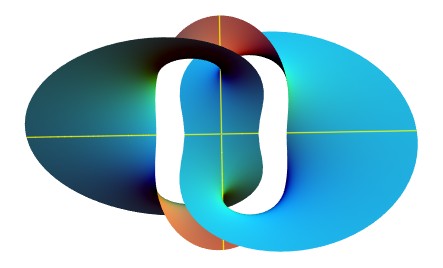Snow Sculpting with Mathematica
Also, mathemematicians like it when their objects are complete. The Longhurst sculpture has a boundary, but is was conceivable that it was part of much larger surface without boundary, just as a disk is a part of the more complete plane in which it resides. Such complete minimal surfaces are much better understood than the general minimal surface.

Using this, we could prove that there is essentially only one complete surface satisfying all geometric properties which were visible in the Longhurst sculpture. However, there was no reason to believe that this abstract mathematical minimal surface should look similar to Longhurst's original sculpture.
It was a big surprise that there is a good amount of similarity. Below is a front view of the surface with the straight symmetry lines on it.

